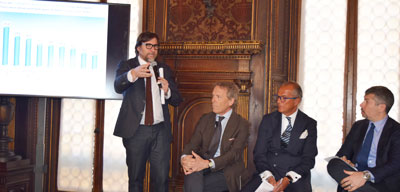Claudio Marenzi, in front of a public of journalists at the Four Seasons Hotel, presented the sector data pertaining to the fashion-textile industry, which was collected and analysed by the Confindustria Moda Research Centre: “Growth was driven above all by non-EU countries; while towards the end of the year, a slowdown in Europe was recorded, with a negative performance in Germany and Spain that had not been seen for many years, which we predict will also continue in 2019. Positive signals arrived from the United States, China, and South Korea; while Japan, which held steady in recent years, returned to a trend of growth, and Russia experienced a new downtrend. 2019 results should remain in line with those of the previous year”.
Going more into detail: the forecasts for growth in 2018 were at +2.1% for 55.2 billion euros, up 1.13 billion over 2017. International trade was less dynamic than expected, with its growth rate slowing down to +2.8% for a value of 31.5 billion euros. Europe slowed down by -0.1%, while the non-EU areas recorded an increase of +6.4%. The USA qualified itself as the first non-EU market with a growth trend of +3.1%, Switzerland grew by +14.8%, and Hong Kong and China in the Far East respectively recorded +2.1% and +23.6%, arriving at a joint value of 3,035 million euros, with results secondary only to Germany, the first Made in Italy market, which was characterised however by a negative trend (-0.7%).
Japan changed pace, recording a +7% uptrend, while South Korea was up by +11.3%. Russia, instead, after its 2017 recovery, backtracked to -0.4%.
2019 began with a downtrend of -2.8% in sales revenue, with businesses continuing to fear instability on a global level, caused by the trade war between the USA and China, tariff barriers to trade, and laws that make it increasingly difficult to do business on international markets. It is especially difficult for SMEs, which are the least structured when it comes to dealing with such problems. “There is an increasingly large gap between those who have the size and economic resources for exporting and those who do not”, was the closing comment of Claudio Marenzi.



